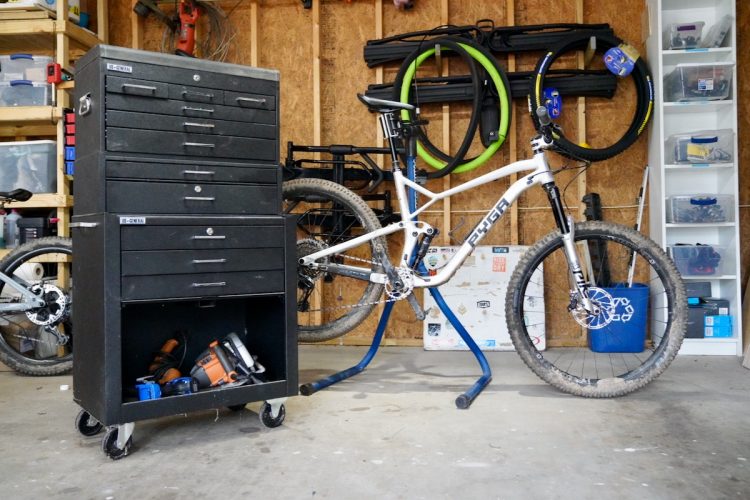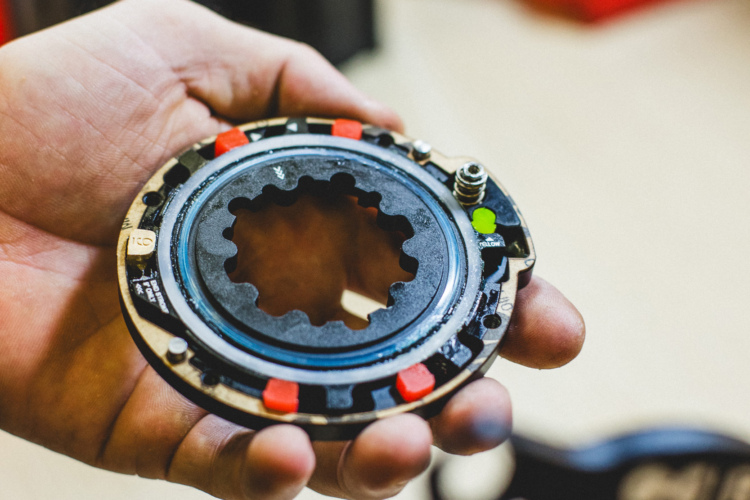
The Quick Question series answers your MTB repair questions. Do you have a quick question about mountain bike repair? 🤔 Email [email protected] and we’ll do our best to answer it!
When everything was made of steel you could slap some grease on any new bike component and tighten the fasteners until your wrist hurt. That was essentially the protocol for bike building back in the day. Now that we’re lightening the ride with carbon fiber, aluminum, and the hunk of occasional magnesium, we need to pay some attention to the bolt-torque on those expensive parts. Today’s reader question sits right in that tightening predicament. “How do I know when to use a torque wrench on my mountain bike?”
The first answer is always. If you have a good torque wrench, and you know the torque spec for a given bolt, it never hurts to use the wrench. When you’re tightening one part on another, and they both have a torque spec, it’s usually best to use the lower value. You can pick up a bike-specific torque wrench, like the Topeak D-Torque Wrench at a reasonable price, and it will potentially last your lifetime. Alternatively, you can grab one from the local hardware store for even less scrilla, but you’ll want to make sure it offers newton meters as a torque measurement since that’s what the bike industry uses. Otherwise, have fun doing lots of conversion math (1 Nm = 8.8507 In/Lb).
The second answer is; “when tightening anything onto carbon.” Stem clamps, brake and shifter mounts, and even grip clamps can be tightened to the point that they crush a carbon handlebar, and it’s always worthwhile to whip out the torque wrench and make sure you’re not overdoing it. If things don’t feel tight enough at their recommended torque you can try adding some Fiber Grip between the two surfaces to prevent movement. This is particularly helpful between two carbon fiber components.

Seat-post clamps are another area where a torque wrench is always helpful. If overtightened, the clamp can ovalize the outer tube of the dropper, causing it to slow down and wear more quickly. In addition to the carbon bar and dropper, there are loads of fasteners that you want to tighten to the proper spec so they don’t come loose. The main bolt on a SRAM crank or the pinch-bolts on an older Shimano model are two clear examples where you won’t want to under tighten things.
Old-school mechanics often say that they have a torque wrench in their wrist or elbow, and if nothing breaks that’s great. For the rest of us, it’s worthwhile to buy the proper tool.
If you don’t have a torque wrench handy, try loosening the bolt to get a good feel for how much pressure it will take to tighten it. Or, if you need to tighten a loose brake lever mount on the trail, try loosening the clamp on the opposite side to feel how tight it needs to be. Pay attention to exactly how many rotations you loosen the bolt, then tighten the exact number of rotations to feel the required torque. Finally, you can tighten them both up with that same felt-sense of torque.

Alternatively, some parts that can get knocked around in a crash can be left somewhat loose. Tightening brake and shift levers just to the point that they don’t move when you use them will allow them to move on impact instead of snapping when they contact the dirt. From there you will be able to quickly reposition the levers without looking for a tool to loosen things up.
Torque wrenches aren’t perfect. In our article about fasteners, several people mentioned the inaccuracy of these trusted tools. It’s worth purchasing one that has been calibrated for torque accuracy if possible. That way, if anything does break you can tell the company that made the kaput component that you followed their torque specs, and hopefully, they will hook you up with a replacement.
The Quick Question series answers your MTB repair questions. Do you have a quick question about mountain bike repair? 🤔 Email [email protected] and we’ll do our best to answer it!





















2 Comments
Mar 21, 2022
Anyways, if you paid a lot for it, and you want it to last, use the right tools. Torque equipment is definitely one of the most basic must haves - it is usually the last tool you use after using a whole host of other tools - CK hub maintenance tool, Vault bearing maintenance tool, start nut punch, bearing punch, reamer facer, truing stand, free hub sockets, cassette wrench, steer tube cutter guide, headset press, stem load presetting, wheel truing, repairing, replacing, adjusting, lubes - ceramic, wet, dry, hybrid, performance grease, anti seize, loctite, carbon gripper, degreaser, silicon, component protector, fuuuuuu.. the list goes on.
Torque wrenches are the visible part of the iceberg that is your cycling tool box and it should definitely be one of the things you buy first and, yes, most manufacturers advise of how long the wrench is expected to be accurate before requiring recalibration - most important thing is to unload the wrench when you're finished using it - never put it away with a torque setting on it as the wrench is internally loaded - unless it is a single-setting preloaded wrench of course. Some professionally set wrenches come with a testing certificate guaranteeing a certain amount of accuracy for a certain amount of time.
Aug 15, 2021